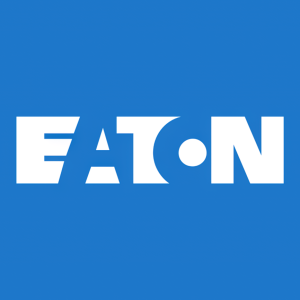Accelerate the Journey to Sustainable Healthcare
Rhea-AI Summary
Eaton highlights opportunities for healthcare decarbonization through energy transition, digitalization, and evolving regulations. The healthcare industry accounts for 8.5% of U.S. emissions, surpassing both residential and commercial sectors. Eaton is developing a microgrid for a California medical center expected to reduce energy costs by 20% and emissions by 25%.
The company emphasizes digital technologies' role in power management optimization, including sensors, AI models, and digital twins. A recent EPA study showed that each dollar saved through better energy performance equals up to $20 in new revenues for non-profit healthcare organizations. The March 2023 CMS waiver now allows healthcare facilities to use alternative emergency power sources, enabling more sustainable solutions like microgrids and solar power.
Positive
- Developing microgrid project expected to reduce client's energy costs by 20% and emissions by 25%
- New CMS waiver enables implementation of alternative emergency power sources, expanding business opportunities
- IRA support of $370 billion in climate and energy proposals creates new market opportunities
Negative
- None.
New opportunities at the intersection of the energy transition, digitalization and evolving regulations
NORTHAMPTON, MA / ACCESSWIRE / December 17, 2024 / Eaton

The Eaton Experience Centers in Houston and Pittsburgh provide a controlled environment for visitors to learn about the company's end-to-end electrical solutions powering healthcare.
Written by Justin Carron, Director of Buildings and Campuses, Eaton
There's never been a better time to decarbonize healthcare. The energy transition and electrification are surging forward while advancements in digitalization can help the most intensive applications use energy more intelligently. And thanks to the Inflation Reduction Act, the return on investment for clean energy projects is better than ever.
We're seeing a growing commitment within the healthcare industry to accelerate decarbonization efforts to tackle climate change. More than 130 of the largest U.S. health sector companies, representing nearly 1,000 hospitals, have joined the White House/HHS Health Sector Climate Pledge to reduce greenhouse gas emissions
According to the White House, the healthcare industry accounts for
Energy transition, electrification and digitalization create new opportunities
Across the U.S. and around the world, industries are steadily replacing carbon-based fuels with renewables, reducing emissions and electrifying everything. This shift is opening the door to create energy systems that do more for sustainability, reliability and the bottom line.
Some healthcare organizations are already demonstrating what it takes to decarbonize and electrify always-on environments. For example, at Eaton we are developing a microgrid for a major medical center in California that will help support critical loads during grid outages while reducing energy costs by up to
Starting a decarbonization project doesn't require you to completely reimagine essential energy systems. The best way to start reducing the emissions of your energy system is to optimize your energy usage, simply using power more efficiently. And the key to using power more effectively hinges on digital technologies.
These digital technologies are the connected devices, data models, insights and analytics that help transform power management by providing the actionable insights needed to prioritize improvements - and they play a major role in sustainability and decarbonization.
For instance, sensors and monitoring platforms can pull real-time data from heating and cooling systems while monitoring environmental conditions. Artificial intelligence (AI) models can apply sophisticated algorithms to optimize power usage while learning and improving with each interaction. The cloud and edge provide the infrastructure for managing all of that data, while mechanisms such as digital twins provide new ways to visualize a building or an entire campus as a living, breathing entity with ever-changing energy and power requirements.
These tools remove the complexity from the once arduous task of determining where energy is being wasted and how potential upgrades will impact overall system performance. Today, there are digital tools specifically designed to baseline carbon emissions. Some electrical power monitoring systems (EPMS) offer an integrated capability that monitor and trend emissions data to identify possible improvements, develop a carbon reduction plan and lead sustainability efforts. These software platforms also provide real-time power and environmental system monitoring across a single facility or multiple locations throughout the world, helping organizations reduce power consumption, costs and unplanned downtime.
Additionally, the electrical system performance gains made possible by digital solutions can help organizations allocate more funding toward to patient care. A U.S. Environmental Protection Agency (EPA) study recently showed that each dollar saved by a non-profit healthcare organization through better energy performance is equivalent to generating up to
Once you've optimized power usage, the next step on the path to decarbonization is the electrification of major building systems. If heating, ventilation, and air conditioning (HVAC) or central utility systems are approaching the end of their life, can they be replaced with low-carbon electrified alternatives? Can you start electrifying fleets or adding electric vehicle (EV) charging infrastructure for patients and personnel? If so, there may be federal funding or tax incentives available to offset the upfront costs. As a result, you'll continue to curtail emissions while reducing operational spend in areas such as vehicle maintenance and fuel cost that will continue to pay off over time.
Policies are evolving to fully decarbonize healthcare operations
Quality patient care requires always-on power - no matter what. Diesel generators have been the de facto emergency power source for decades. But today, sources of energy once considered "alternative" are providing reliable emergency power at a fraction of the environmental impact.
However, clean energy technologies like microgrids, renewables and energy storage could not be used for emergency power in most critical healthcare applications until recently. This was because healthcare facilities that participate in Medicare and Medicaid programs needed to adhere to the 2012 National Fire Protection Association (NFPA) Health Care Facilities Code (NFPA 99) - which required emergency power for an essential electric system (EES) to be supplied by a diesel generator.
In March 2023, Centers for Medicare & Medicaid Services (CMS) announced a categorical waiver permitting new and existing healthcare facilities to use alternative sources of emergency power in accordance with the 2021 edition of the NFPA 99 and 2023 edition of the National Electric Code (NFPA 70). In other words, this program enables emergency power for an EES to be supplied by sources other than a generator, such as a microgrid system. Although the waiver excludes long-term care facilities that provide life support, I believe this change will open the door to further decarbonize the healthcare industry.
Utilizing a microgrid that coordinates onsite energy sources such as solar, fuel cells or battery energy storage systems for emergency power is more sustainable, more resilient, and often more reliable than fossil-fueled generators. For example, when Hurricane Fiona wiped out power across Puerto Rico, limited diesel supplies threatened the uptime of community health centers. But all nine community health clinics with solar-powered systems remained operational.
Updating industry regulations to keep up with changes in technology and facility codes is a process that takes time but is necessary to continue accelerating decarbonization and help usher in a new era of resilience and sustainability across America.
Start reducing emissions today
There's assistance for those starting to pave the way to a clean energy future. Late last year, the Inflation Reduction Act (IRA) was passed and will support approximately
These incentives can help propel clean energy projects. And while it isn't realistic to completely overhaul electrical systems in short order, I believe it is important to begin thinking how you can create a more scalable, digital and electrified foundation ready for the demands of tomorrow.
We're working with customers across the healthcare industry to modernize and optimize energy systems to establish the flexibility needed to meet the demands of the future. This is an incremental process. It's not about replacing energy systems but making them ready for whatever comes next, so you can easily deploy EV charging, renewable energy, energy storage or other carbon-friendly additions when you're ready.
At Eaton, we're helping customers accelerate a more sustainable future through our industry expertise, pioneering technologies and collaboration with customers and industry partners. Whether your organization is looking to completely decarbonize operations, start replacing carbon-based processes with environmentally friendly and electrified alternatives, or simply install modern metering and monitoring devices-we're here to help you simplify your journey toward a low-carbon energy future.
Contact:
Kristin Somers
+1.919.345.3714
Kristincsomers@eaton.com
Regina Parundik
Cobblestone Communications
+1.412.559.1614
View additional multimedia and more ESG storytelling from Eaton on 3blmedia.com.
Contact Info:
Spokesperson: Eaton
Website: https://www.3blmedia.com/profiles/eaton
Email: info@3blmedia.com
SOURCE: Eaton
View the original press release on accesswire.com








